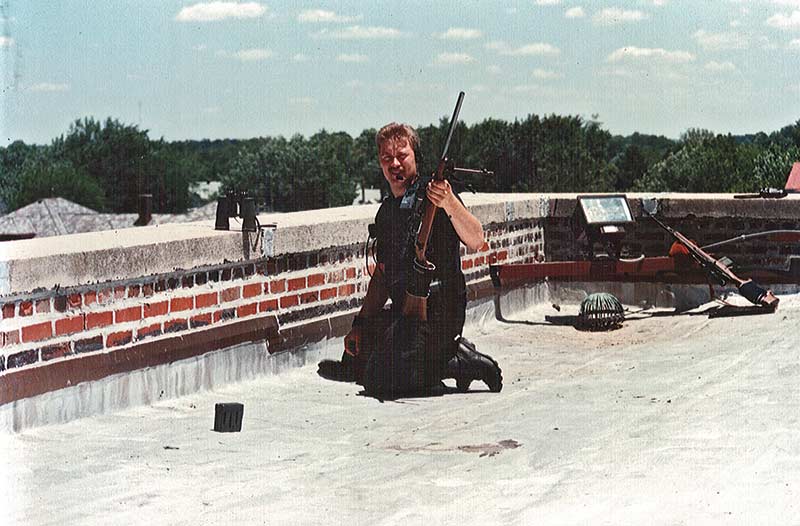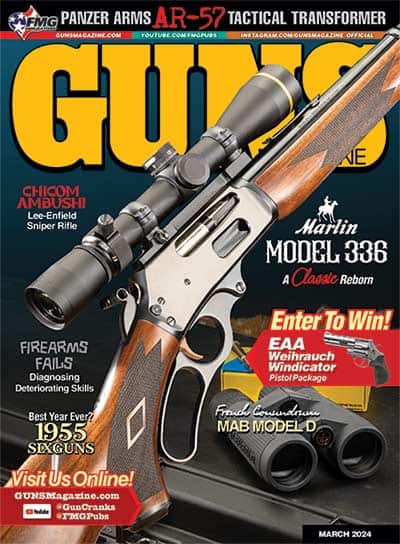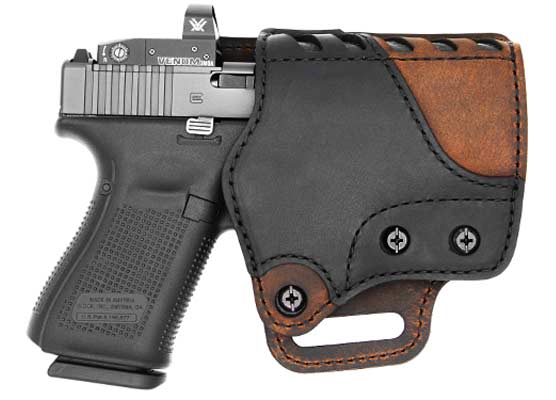Sniping Old School
How Did We Ever Hit Anything?
As I laid on the muddy ground, staring at a target 400 yards distant, it suddenly struck me: I didn’t have a screwdriver handy. In the old days, this would have been a critical error.
Ever heard of the tactical applications of the common flat-blade screwdriver? If you’re under the age of 50, probably not. However, if you — much like Your Humble Correspondent — are well past your proverbial “Use By” date and have done any long-distance shooting, you’ve probably already guessed what I’m talking about: Turrets, as in those dials you use to adjust windage and elevation on a telescopic rifle sight.
You see, I was a police sniper back in the hoary old days. I attended my first formal training in 1990, which, if my math is correct, is about three ice ages past. At least it feels that way when contrasted to my experiences last week at long-range shooting training.
We had top-flight, state-of-the-art gear along with experienced instructors who helped make things such as 1,100 yard shots achievable if not exactly easy. In fact, ringing a 10″ steel plate at 700 yards in a stout crosswind was almost boring. Things weren’t always such.
At this point in our story, the mists of time are starting to coagulate and I must warn our more sensitive readers: “Danger! Codger Reminiscence Zone Ahead.”
If you happen to be a younger shooter, please stick around as you might learn something. You’ll primarily learn you don’t want to go back in time, but it is something.
Shooting in the Paleozoic Era
My first issued “sniper” rifle was a .308 Winchester Ruger M77 with a Leupold Vari-X III scope. It wasn’t a bad hunting rig even by today’s standards but for a “professional” police sniper who was counted on to make one-shot stops on hostage-takers at then-unbelievable distances, it was lacking in several areas.
The action was stock-standard, not glass- or pillar-bedded. The trigger likewise was as it came from the factory and probably measured about 7 lbs. on a digital trigger gauge, which we didn’t own. The barrel had a fairly heavy contour, a plus, while the walnut stock sported a red rubber recoil pad which didn’t do much of anything. I did apply a high-tech Dr. Scholls Bunion Pad to the top of the stock to help with cheek weld.
On a good day when the weather had been stable for a while, ¾ MOA was definitely achievable and occasional groups were even tighter, despite the sneaking suspicion that luck played a major part, which didn’t exactly inspire confidence. The original M77 rifles were supposedly built with barrels outsourced from multiple manufacturers and were notorious for widely varying levels of accuracy. I must have gotten a good one because when fed a steady diet of 168-grain Federal Match ammo, the gun mostly shot up to the level required.
Lest you think we were the poor white trash of the shooting fraternity, we were. However, only a few teams had better gear than we did, many were on par and a few had even worse. In those days before cell phones, I wouldn’t have been too surprised to see someone show up to LEO sniper school with an external-adjustment Unertal scope on a .50-70 rolling-block.
My glass was one of the top scopes of the era, even though I deeply longed for a mil-dot reticle to replace my duplex crosshairs. The military widely used these “exotic” reticles but it was just beginning to be accepted into the civilian world at the time. This also led to a burgeoning cottage industry of folks who would retro-fit mil-dots into your scope. According to rumors (an early prototype of the internet), the modification often worked provided you didn’t mind a bit of scope fogging and warranty voiding.
My duplex-dot worked okay out to about 700, if I remember correctly. Past this, you used thickening point of the lower duplex line as the aiming point while over 1,000 yards, you were definitely in the “Kentucky Windage” portion of the program. Ever tried to hold 36 feet of elevation without the aid of reticle markings? Things like 20 MOA scope bases were around but were seen less often than Bigfoot.
A key component of the shooting process was the screwdriver, or failing this, a dime. You see, target turrets were becoming more available but weren’t really abundant on the firing line when I started. In fact, having target turrets marked you as a serious long-distance shooter, unlike the majority of the regular cops who just thought being a sniper sounded cool because you got to lay on rooftops and point rifles at bad guys.
The ballistic computers of the day were extremely dependable because they were made of paper. These were known as “ballistic charts” and were strongly supplemented by your log book. The goal of every sniper was to collect DOPE (Data On Previous Engagements) over a wide variety of conditions so you had an inkling of effective “come-ups” beyond the standard ballistic chart.
A good shooter collected literally reams of data on their gun and single chosen load so they had a fair idea of how the combo performed over the course of widely varying weather conditions. Given a considerable number of guns still sported wood stocks, this was a critical matter on long shots. Today, my rain-stained logs, full of indecipherable pencil scribbles and diagrams, are some of my most prized shooting possessions.
Electronics?
The only electronics we had were, wait a minute, lemme think … there were no electronics. Supposedly some secret-squirrel types in the military had wonderous brick-sized ballistic calculating machines but the only thing available to civilians aside from a paper chart was the “Mil-Dot Master.” This cardboard slide rule quickly gave you proper holds and worked fairly well, according to the two or three guys who had one. Using it was predicated on having a Mil-dot reticle, which … well, you already know the story. For those who don’t trust electronics — bless you — the Mil-Dot Master is still available today.
Wind? We used a sophisticated, extremely delicate sensing device to call wind: the eyeball. It was supplemented by the sensations on your cheek, range flags, blades of grass thrown into the air, dust clouds and a thorough analysis of what nearby leaves were doing. Nowadays, every rifle shooting class includes an in-depth discussion of how to read wind by observing leaves in motion and the students earnestly listen to these presentations while taking notes. Then, upon stepping outside, they instantly forget the whole business because everyone has a handheld Bluetooth-compatible weather station in their shooting bag, plus a phone internet connection that can poll the five closest airports for updated meteorological data. I suppose this is also why I haven’t seen an analog thermometer on the range in years.
Distance determination is another area where things have changed dramatically. We were all taught to range targets using a mil-dot reticle — oops — and by good old guestimation. I’m glad the mil-dot method isn’t used much because I somehow always screwed up the calculations, always ending with answers like “The target is 69,462 furlongs away.”
Nowadays we all have pocket laser rangefinders that are highly accurate out to thousands of yards. There are even models that automatically transmit the range and target angle to your ballistic computer so you don’t have the opportunity for a miss due to typographical error. The fact we hit anything at all back in the ’90s is simply amazing today.
I haven’t even touched on the more esoteric sniping technology that has been developed, things like scopes, which calculate the firing solution and set the crosshairs to indicate the proper hold. Factors such as Coriolis effect, rifle cant, barometric pressure, wind and shooter acid reflux (probably) are automatically analyzed and the shooter merely snaps the trigger when indicated. It’s all done faster and arguably better than any human can do. These systems likely represent the future, at least until firearms themselves become obsolete.
And I’m told the only tool you’ll need to carry is a screwdriver.




